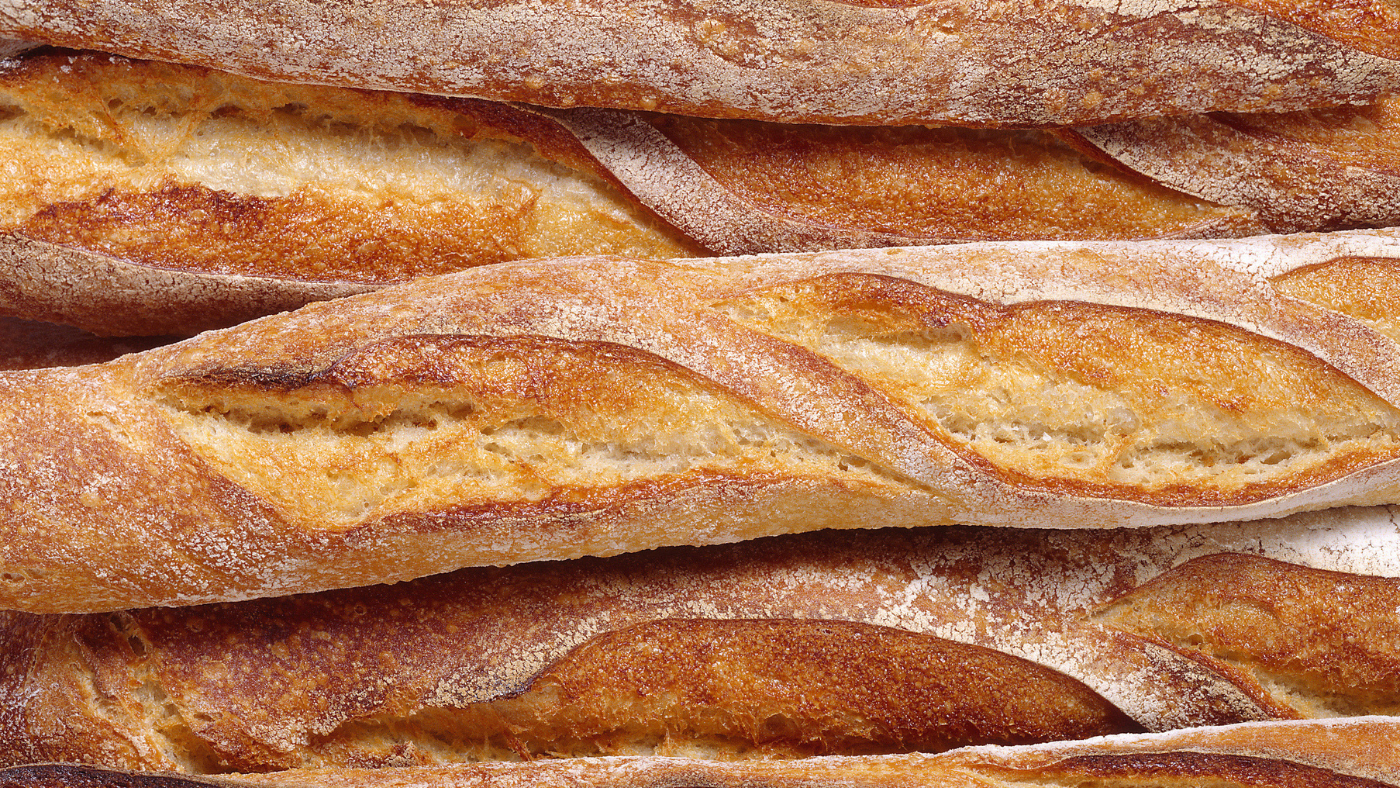Why are French baguettes so long? From Parisian breakfast tables to artisan bakeries around the world, the iconic length of the French baguette is more than just a stylistic choice. Its long, slender shape tells a story of history, function, and tradition, shaped by baking laws, cultural identity, and the quest for the perfect crust. In this article, we explore why French baguettes are so long and uncover the fascinating reasons behind one of the most recognizable breads in the world.
History of Bread Shape: Why Are French Baguettes So Long?
The elongated shape of the French baguette didn’t emerge overnight—it evolved over centuries, influenced by technological innovations, changing baking methods, and cultural preferences.
Evolution from Round Loaves to Long Loaves in 18th–19th Century France
Before the 18th century, French bread was typically shaped into large, round loaves known as boules (from which the word “boulangerie” is derived). These dense, crusty rounds were ideal for long storage and communal meals. However, during the 18th and especially the 19th century, bakers began experimenting with longer, thinner loaves. This transition allowed for quicker baking times, better portion control, and more crust—a highly valued trait in French bread culture.
Influence of Viennese Steam Ovens and Refined Flour
A major turning point came in the mid-19th century with the arrival of Austrian baking techniques. Viennese baker August Zang opened a bakery in Paris in the 1830s, introducing steam ovens and white, refined flour to French bakers. These innovations made it possible to bake lighter, airier loaves with a crisp crust—precursors to the modern baguette. The long, slender shape helped optimize the baking surface for even crust development and faster oven throughput.
Baguette Named Officially in 1920 Regulation (“Wand” Shape)
Although long loaves were popular for decades, the word baguette—meaning "wand" or "stick" in French—was not officially associated with the bread until 1920. A regulation passed that year permitted bakers to start work later in the morning (after 4 a.m.), which meant they needed faster-baking dough. The long, thin shape of the baguette met this need perfectly, solidifying its identity both in law and in public consciousness.

Bakery Laws & Regulations
The baguette's length and structure aren’t just culinary quirks—they’re shaped by legal and labor factors that defined how French bakers could work and what they could produce.
1920s Bake-Time Restriction (No Work 10 PM–4 AM) Led to Thinner Dough for Faster Bake
In 1920, the French government passed a labor law prohibiting bakers from starting their workday before 4 a.m., part of broader labor protections in post-WWI France. This created a challenge for bakers, as traditional round loaves took hours to ferment, shape, and bake. The solution? A long, thin loaf that could be prepared and baked quickly. Thus, the baguette rose in popularity not just for taste but out of legal necessity.
1920 Regulation on Max Length (40 cm Evolving to ≈65 cm)
While early baguettes may have varied in length, over time French authorities introduced standards for the bread’s dimensions. Initially limited to about 40 centimeters, the standard length grew closer to 65 cm as the baguette evolved into a symbol of French daily life. Though not strictly enforced today in artisan bakeries, these dimensions are still widely recognized as the norm for traditional baguettes.
1993 Le Décret Pain: Four-Ingredient Rule & Traditional Size Definitions
In 1993, the French government enacted Le Décret Pain (The Bread Decree), a regulation that legally defined what could be sold as “traditional French bread.” According to the decree, a traditional baguette de tradition française must be made using only four ingredients: wheat flour, water, salt, and yeast (or levain). It also restricts the use of additives and freezing methods and codifies expectations for size and structure. While the decree doesn’t mandate exact length, it reinforced the artisanal standards that helped preserve the baguette’s iconic form.

Functional Reasons
Beyond history and regulation, the baguette’s length offers several practical advantages that contribute to its culinary value and enduring appeal.
Higher Crust-to-Crumb Ratio Enhances Flavor and Texture
One of the main reasons for the baguette’s long shape is the enhanced crust-to-crumb ratio. In a traditional baguette, the crust accounts for a large portion of each bite, delivering a satisfying crunch and toasty flavor. This texture contrast is a hallmark of great bread—and the long form maximizes it far more effectively than round or square loaves.
Faster Baking Time & Better Heat Distribution
The slender profile of the baguette ensures that heat penetrates the dough quickly and evenly. This reduces baking time—critical in commercial bakeries—and improves crust formation. The steam-filled ovens used in French baking also contribute to the crisp exterior while maintaining a tender, airy interior.
Easy Portioning, Tearing, and Slow Staling for Freshness
The long baguette is designed for sharing. It can be easily torn or sliced into portions, making it ideal for table service, sandwiches, or simple meals with cheese and wine. The shape also encourages quicker consumption, which aligns with the baguette’s tendency to go stale within a day. In fact, the rapid staling is part of the reason why fresh baguettes are baked multiple times per day in France.

Conclusion
So why are French baguettes so long? The answer lies at the intersection of tradition, practicality, and regulation. The baguette’s length helps it bake faster, develop more crust, and serve conveniently at the table. From historic French labor laws to evolving culinary preferences, every detail of its form serves a purpose. Understanding the story behind the baguette’s length helps us appreciate this everyday bread as a carefully crafted symbol of French culture.
Related Articles:







